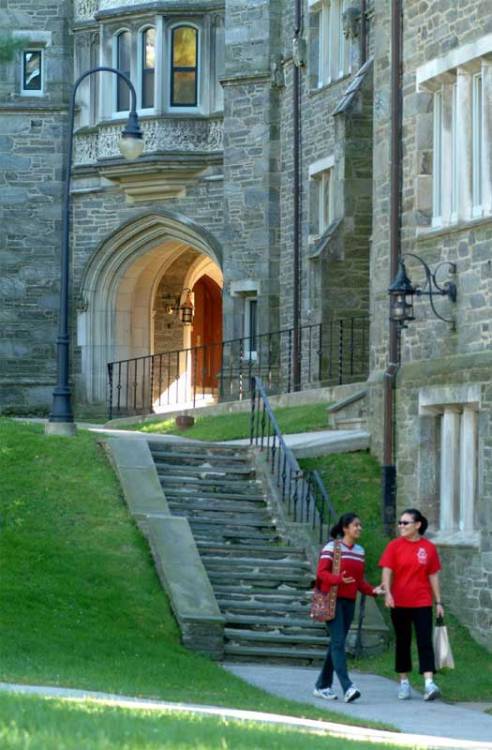
The Graham Company suffered the great misfortune of losing many of their costumes, and sets and props, in a storage facility that was ruined during Hurricane Sandy. These costumes are on loan as part of the reconstruction arrangement Bryn Mawr has with the Martha Graham Dance Company.
GOODHART HALL BRYN MAWR COLLEGE ADDRESS FULL
Attached to this is a full skirt with overlapping material that forms a slit, which is not visible without movement. The bodice is fitted, with cap sleeves and a square neckline – and with two princess seams running down its length, from where the neckline meets the sleeve (almost under the arm), over the bust, to a low dropped waist. I would describe the costumes, at first glance, as: long black dresses – they are intended to just brush the top of the foot. Synthetics notwithstanding, these costumes are true to Graham’s 1930’s stipulations and to the nature of Steps in the Street – they are both determinedly solemn as well as deceptively complex. Though it is still a somewhat heavy fabric to dance in (compared to the super-technology we now have in athletic gear) it is undoubtedly lighter than its 1930s counterpart – more of a second skin, less of a pelt. Thankfully, in 2014 Bryn Mawr and Haverford dancers will be wearing cotton jersey. In 1936 Martha Graham and her dancers were wearing costumes made of double knit wool.

Walking on Bryn Mawr campus during the day is unrestricted for visitors, but entering Erdman Hall requires permission from the administration office of the college.Itchy wool, the smell of wet wool, trying to reshape a stretched out sweater – or worse, trying to stretch a shrunken one… When I think of dancing in a near floor-length dress made of wool these are the thoughts running through my mind. Students who live there during the academic year say that Erdman Hall grows on them and, that even half a century later, it reminds them of the ever evolving modernity in their lives and on campus. But the leafy grounds help modify its austere appearance. This building is a bold statement and perhaps not easy to like.

The interior with its concrete slabs, small hanging cluster lights and distinct geometric separations functions as part of the conceptual design of Erdman Hall. At first glance this is a formidable building of concrete framing, cinderblock walls with slate panels outside and plaster inside that allow light through small elongated windows. The design of Erdman Hall was, in Kahn’s words, based on a “sense of hospitality … as part of the fabric of the house itself.” This fabric was transformed here into an instantly recognizable cluster of tall and austere buildings that were designed as intersecting diamond shapes gathered around a spacious interior place of “hospitality” with light entering from the top. Kahn was a Philadelphian architect by choice and of many callings, and over time his architectural vision matured into what has been called monumental, monolithic, beyond modernism.

The most dramatic of these is Erdman Hall, near Morris Avenue, designed by Louis I Kahn in the 1960s and named after a generous alumna. The collegiate Gothic revival style of that era with its turrets and archways prevails and various compatible additions made their appearance later. I recently went for a walk across the leafy campus of Bryn Mawr College looking at the various architectural styles that have evolved since the college opened in the late 19th century.


 0 kommentar(er)
0 kommentar(er)
